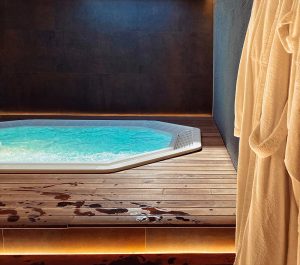Soakaways are an important part of good drainage systems for minimising floods in residential and commercial locations. These underneath structures allow rainfall to seep down into the earth, aiding in the development of sustainable drainage systems (SuDS). Soakaway tests are required to guarantee the efficiency and durability of soakaways.
We will explore the realm of soakaway testing in this tutorial, including step-by-step instructions, crucial factors, and insights into interpreting findings. Of course, to get the best results, be sure to engage professionals such as Ibex Consultants.
Soakaway Testing: What Is That?
A soakaway is an efficient means of storing surplus water runoff and controlling its penetration into the surrounding soils rather than the local sewage system or water courses.
A typical soakaway should hold the immediate volume of water expected of an impermeable region during a normal storm in that location. In preparation for the next storm, this water should entirely penetrate into the surrounding soil over a 24-hour period.
Soakaway testing serves numerous important functions:
Performance
Soakaway tests determine how successfully a soakaway regulates rainwater penetration, ensuring that it performs ideally.
Sizing and Design
These tests aid in determining the appropriate size and design for soakaways while taking into account local soil characteristics and rainfall patterns.
Regulatory Compliance
Many local governments and legislation require soakaway testing to verify drainage and environmental criteria are met.
What Are The Types Of Soakaways Available?
Conventional Soakaways
The traditional soakaway is made out of a slightly perforated cylinder or rectangle chamber. These systems are intended to collect rainfall and gradually permeate it into the surrounding soil, effectively dispersing surplus water and reducing surface floods.
Borehole Soakaway
A borehole soakaway, often known as a borehole soakaway system or just a borehole, is a different technique of dealing with surface water runoff and wastewater. It entails drilling a deep hole or borehole into the earth and filling it with a permeable substance to allow for water penetration and discharge.
Borehole soakaways are typically utilised in situations where standard surface soakaways may not be viable or efficient due to unique soil characteristics or limited space.
The most common type of infiltration test in a borehole is a falling head test, which is performed in a borehole above the water table by filling the borehole with clean water and monitoring the depth of water at hourly intervals.
Guide For Soakaway Testings
Step 1: Select The Correct Site
Select an acceptable location for the soakaway test site, taking into account issues such as distance to the drainage system and avoiding locations with high groundwater tables.
Step 2: Get the Proper Tests Done
The percolation test involves digging a test pit and measuring the rate at which water percolates through the soil. This test determines soil permeability, which is an important aspect in soakaway design.
Step 3: Get The Designs Done
Design the soakaway based on the test findings to match the anticipated infiltration rate and handle the projected amount of rainfall.
Soakaways are built to be able to contain the volume of water that the site can generate. This water volume is computed using the site’s impermeable ground area, the normal quantity of precipitation created by the site’s typical storm, and other water sources. Thus, the size of the soakaway for the site may be established by calculating input vs outflow based on the drained feature.


